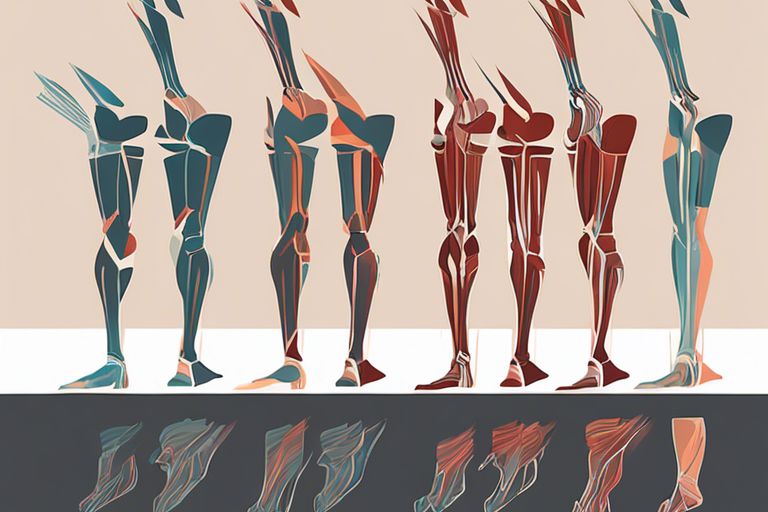Have you ever wondered how your daily walk measures up against other types of exercise? Walking, a low-impact aerobic activity, offers numerous health benefits for all fitness levels. Compared to other forms of exercise, walking is accessible, convenient, and requires minimal equipment. Not only does it help in weight management and reducing the risk of chronic diseases, but it also provides mental health benefits and improves overall well-being. In this blog post, we will compare walking to other popular forms of exercise and discuss the benefits and risks of each.
Walking Vs. Other Cardiovascular Exercises
By incorporating cardiovascular exercises into your fitness routine, you can improve your cardiovascular health, burn calories, and boost your overall fitness level. When it comes to cardio exercises, walking is a popular choice, but how does it compare to other forms of cardiovascular exercise like running and cycling?
Walking Compared to Running
When comparing walking to running, it’s important to consider the impact on your body. While both activities provide cardiovascular benefits, running puts more stress on your joints, particularly your knees and ankles. If you are new to exercise, have joint issues, or want a lower-impact option, walking may be a better choice for you. In terms of calorie burn, running burns more calories per mile than walking. However, walking can still be an effective way to burn calories, especially if you are able to walk longer distances. A comparison of walking and running can be seen in the following table:
Walking Vs. Running
| Activity | Impact on Joints | Calories Burned |
|———–|——————|—————–|
| Walking | Low | Moderate |
| Running | High | High |
Walking Versus Cycling
When it comes to comparing walking and cycling, both activities offer cardiovascular benefits and can be tailored to your fitness level. Cycling is a more intense workout and can burn more calories in a shorter amount of time compared to walking. However, cycling requires access to a bike and suitable terrain, whereas walking can be done almost anywhere. Additionally, cycling puts less pressure on your joints compared to running, making it a suitable option if impact exercises are not ideal for you. Here’s a brief comparison of walking and cycling:
Walking Vs. Cycling
| Activity | Accessibility | Joint Impact | Calorie Burn |
|———–|—————|————–|————–|
| Walking | Anywhere | Low | Moderate |
| Cycling | Bike needed | Low | High |
When considering your options for cardiovascular exercise, it’s important to find an activity that you enjoy and that aligns with your fitness goals. Each form of exercise has its own benefits and drawbacks, so consider your personal preferences and any physical limitations when deciding which activity is right for you. Remember that the most effective exercise routine is one that you can stick to consistently, so choose an activity that you enjoy and that fits seamlessly into your lifestyle.
Strength and Flexibility Training Vs. Walking
Some people may argue that strength and flexibility training are superior forms of exercise compared to walking. While walking is a great way to stay active and maintain cardiovascular health, strength and flexibility training offer additional benefits that can significantly improve your overall physical well-being.
Benefits of Strength Training Over Walking
When it comes to strength training, the benefits go beyond simply improving muscle tone and strength. By engaging in regular strength training exercises, you can increase your metabolism, improve bone density, and reduce the risk of injury. This is especially important as you age, as it can help you maintain independence and prevent falls.
Can Walking Promote Flexibility?
While walking can help improve your cardiovascular fitness, it is not particularly effective in promoting flexibility. Flexibility training is crucial for maintaining overall mobility and preventing injury. By incorporating specific stretching exercises into your routine, you can improve your range of motion and reduce muscle stiffness, ultimately enhancing your overall physical performance.
Exercise Intensity and Caloric Expenditure
After discussing the benefits of walking as compared to other forms of exercise, it’s important to consider the intensity of the workout and the caloric expenditure. The intensity of an exercise is a key factor in determining how many calories you burn during a workout. Higher intensity activities typically burn more calories per minute than lower intensity activities. When it comes to walking, the intensity can vary based on factors such as speed, incline, and duration.
Measuring Exercise Intensity in Walking
When it comes to walking, exercise intensity can be measured using metrics such as heart rate, perceived exertion, or the talk test. The talk test involves being able to speak comfortably while walking, but not being able to sing. If you can sing while walking, you may not be walking at a brisk enough pace to achieve the desired intensity level.
Caloric Burn: Walking Compared to Other Exercises
When comparing the caloric burn of walking to other exercises, it’s important to consider the intensity and duration of the activity. Here’s a breakdown of the approximate caloric expenditure for a 155-pound person engaging in various activities for 30 minutes:
| Activity | Caloric Expenditure |
|————-|———————|
| Walking (3.5 mph) | 149 |
| Jogging | 205 |
| Cycling | 260 |
| Swimming | 223 |
As you can see, walking at a moderate pace burns fewer calories than jogging, cycling, or swimming in the same amount of time. However, walking is still an effective form of exercise, especially for beginners and those looking for a low-impact workout.
Health Benefits and Risks
Despite the abundance of exercise options available, walking remains one of the most accessible and effective forms of physical activity. When it comes to your health, walking offers a range of benefits, but it’s also important to be aware of potential risks.
Cardiovascular Health: Walking and Alternatives
When it comes to cardiovascular health, walking is an excellent way to improve your heart health. It’s a low-impact exercise that gets your heart pumping without putting too much strain on your joints. However, if you’re looking for alternatives, activities such as cycling or swimming can also provide similar benefits. These exercises can help lower your risk of heart disease, improve circulation, and boost your overall cardiovascular fitness.
Injury Risk: Walking Vs. High-Impact Exercises
One of the major advantages of walking as an exercise is its low risk of injury compared to high-impact exercises like running or jumping. Walking puts minimal stress on your joints, making it a safe option for individuals of all fitness levels, including those with existing joint issues. On the other hand, high-impact exercises can lead to a higher risk of overuse injuries and joint strain. However, it’s important to note that walking on uneven surfaces or wearing improper footwear can still pose risks for injury, so it’s crucial to pay attention to your surroundings and wear appropriate shoes.
Accessibility and Sustainability of Exercise Habits
To maintain a regular exercise routine, it is important to consider both accessibility and sustainability of different forms of exercise. This will help ensure that you can engage in physical activity consistently and reap the numerous health benefits associated with regular exercise.
Walking as an Accessible Form of Exercise
Walking is one of the most accessible forms of exercise available to you. You don’t need any special equipment or a gym membership to get started – all you need is a good pair of supportive shoes. You can walk almost anywhere, whether it’s in your neighborhood, a park, or even around your workplace during lunch breaks. This makes it incredibly convenient and easy to incorporate into your daily routine, no matter how busy you are.
Long-Term Sustainability of Walking vs. Other Exercises
When considering the sustainability of exercise habits, it’s important to think about whether you can maintain them over the long term. Walking has a distinct advantage in this area. Unlike more intense or high-impact exercises, walking is gentle on your joints and muscles. This means that you are less likely to experience injuries or burnout, making it easier to stick with your walking routine over time. Additionally, walking can be easily integrated into your daily activities, making it a habit that is more likely to last as part of your regular lifestyle. This makes it an ideal choice for maintaining long-term physical activity and overall health.
Conclusion
So in conclusion, when considering different forms of exercise, walking offers numerous benefits that make it just as effective, if not more so, than other types of exercise. Not only does walking provide a low-impact, accessible way to improve your cardiovascular health and strength, but it also has mental and emotional benefits that cannot be overlooked. By incorporating walking into your fitness routine, you can achieve your health and wellness goals while enjoying the outdoors and connecting with nature.




